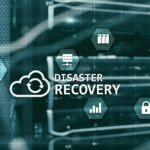Table of Contents
Introduction
The Internet of Things (IoT) is no longer just a futuristic concept; it’s a reality transforming businesses worldwide. The Internet of Things drives efficiency, enhances customer experiences, and boosts manufacturing and healthcare profitability. Enterprises embracing connected devices and intelligent systems gain valuable insights, reduce operational costs, and improve productivity.
This article will explore how IoT revolutionizes various industries, the technologies powering its growth, and the challenges businesses face while implementing it. Let’s dive into the spectacular advancements in IoT fueling business growth.
1. The Evolution of IoT in Business
1.1 What is IoT?
The Internet of Things is a network of interconnected devices communicating and exchanging real-time data. These devices range from smart sensors and industrial machinery to wearable technology and home automation systems. The Internet of Things enables businesses to collect, analyze, and act on vast amounts of data, leading to more intelligent decision-making and streamlined operations.
1.2 Historical Background of IoT
The Internet of Things concept dates back to the early 1980s when the first internet-connected device—a modified Coke vending machine at Carnegie Mellon University—was developed. However, the real growth of IoT began in the late 1990s and early 2000s, with advancements in wireless technology, cloud computing, and AI. Today, the Internet of Things is at the heart of digital transformation across industries.
2. IoT and Its Impact on Business Growth
2.1 Enhancing Operational Efficiency
One of the most significant advantages of the Internet of Things is automation. Smart devices reduce the need for human intervention in routine processes. For example, in manufacturing, the Internet of Things-powered machines monitor their performance and predict maintenance needs before failures occur. This minimizes downtime and boosts overall efficiency.
2.2 Improving Customer Experience
The Internet of Things enables businesses to offer personalized services. Innovative retail systems track customer preferences and suggest products based on past purchases. In healthcare, wearable devices monitor patients’ health and alert doctors in case of abnormalities, ensuring timely interventions.
2.3 Cost Reduction through the Internet of Things
By leveraging the Internet of Things, businesses can significantly reduce operational costs. Predictive maintenance eliminates expensive equipment failures, while energy-efficient Internet of Things devices lower utility bills. For example, smart thermostats adjust temperatures based on real-time occupancy, reducing unnecessary energy consumption.
3. Key IoT Technologies Driving Business Growth
3.1 AI and Machine Learning Integration
Artificial Intelligence (AI) enhances the Internet of Things by analyzing real-time data and making intelligent predictions. AI-powered Internet of Things applications optimize supply chains, detect operation anomalies, and automate decision-making processes, saving time and resources.
3.2 Edge Computing
Edge computing brings data processing closer to the source rather than relying on centralized cloud servers. This reduces latency, improves real-time decision-making, and enhances security by keeping sensitive data within local networks.
3.3 5G and IoT Connectivity
The rollout of 5G networks is accelerating the Internet of Things adoption. With ultra-fast connectivity and lower latency, businesses can deploy more Internet of Things devices without compromising performance. This particularly benefits smart cities, autonomous vehicles, and industrial automation.
4. IoT Applications Across Various Industries
4.1 IoT in Manufacturing
The Internet of Things-powered smart factories use sensors to monitor production lines, detect defects, and automate maintenance. This reduces human errors, increases efficiency, and enhances product quality.
4.2 IoT in Retail
Retailers leverage the Internet of Things for intelligent inventory management. RFID tags track product movements, while smart shelves notify store managers of low stocks. Personalized marketing campaigns use the Internet of Things-driven insights to enhance customer engagement.
4.3 IoT in Healthcare
The Internet of Things is revolutionizing healthcare, from remote patient monitoring to smart prosthetics. Wearable health trackers detect early signs of illnesses, while connected devices enable doctors to provide virtual consultations.
4.4 IoT in Agriculture
Agriculture is undergoing a digital transformation with the Internet of Things-powered innovative farming solutions. Field sensors monitor soil moisture, temperature, and nutrient levels, helping farmers make data-driven decisions. Automated irrigation systems use real-time weather data to optimize water usage, reducing waste and increasing crop yields. Drones with the Internet of Things technology analyze crop health and detect pest infestations, allowing for targeted interventions.
Additionally, the Internet of Things helps monitor livestock. Wearable devices track animal health, movement, and reproductive cycles, alerting farmers to abnormalities. This proactive approach improves animal welfare and enhances productivity in the agricultural sector.
4.5 IoT in Smart Cities
Cities worldwide are adopting the Internet of Things to improve urban living. Intelligent traffic management systems analyze real-time traffic data and adjust signals to reduce congestion. the Internet of Things-enabled waste management solutions optimize garbage collection routes, reducing costs and environmental impact.
Energy efficiency is another significant advantage of the Internet of Things in smart cities. Intelligent streetlights adjust the brightness based on pedestrian movement, conserving electricity. Connected sensors monitor air quality and pollution levels, providing data for sustainable urban planning.
5. Challenges and Risks of The Internet of Things Implementation
5.1 Security and Privacy Concerns
Security risks are a significant challenge with billions of devices connected to the internet. Cybercriminals can exploit the Internet of Things network vulnerabilities to launch attacks, steal sensitive business data, or disrupt operations.
To mitigate these risks, businesses must implement strong encryption, multi-factor authentication, and regular security updates. Additionally, data privacy regulations such as GDPR require businesses to protect customer information, making cybersecurity a top priority.
5.2 Integration Challenges
Many businesses find integrating the Internet of Things with existing infrastructure challenging. Legacy systems may not be compatible with modern Internet of Things technologies, leading to high costs and complex implementation processes.
To overcome this, businesses should invest in scalable Internet of Things platforms that support seamless integration with current software and hardware. Partnering with the Internet of Things solution providers can also simplify deployment and reduce technical barriers.
5.3 Scalability Issues
Managing more devices becomes challenging as businesses expand their Internet of Things networks. Network congestion, data overload, and processing delays can hinder performance.
Cloud computing and edge computing help address scalability concerns by distributing data processing across multiple locations. Businesses must also establish robust network management strategies to ensure smooth Internet of Things operations.
6. Future Trends in The Internet of Things for Business Growth
6.1 AI-Powered IoT
The future of the Internet of Things lies in integrating Artificial Intelligence. AI-driven Internet of Things systems will enable businesses to automate complex processes, enhance predictive analytics, and improve decision-making.
For instance, AI-powered chatbots will provide real-time customer support, while machine learning algorithms will optimize supply chain logistics. Businesses that embrace the AI-powered Internet of Things will gain a competitive edge in efficiency and innovation.
6.2 IoT and Blockchain
Blockchain technology is set to enhance the Internet of Things security and transparency. By creating decentralized and tamper-proof data records, blockchain reduces the risk of fraud and cyberattacks.
Smart contracts, powered by blockchain and the Internet of Things, enable automated and secure transactions without intermediaries. This is particularly beneficial for industries such as finance, supply chain, and healthcare, where data integrity is critical.
6.3 Sustainability with IoT
As businesses prioritize sustainability, the Internet of Things reduces environmental impact. Intelligent energy management systems optimize power consumption in offices, factories, and homes, lowering carbon footprints.
IoT-driven solutions in agriculture, waste management, and transportation contribute to sustainability goals. Companies investing in green Internet of Things technologies reduce costs and enhance their reputation as environmentally responsible brands.
Conclusion
The Internet of Things revolutionizes businesses across industries, driving efficiency, reducing costs, and enhancing customer experiences. It enables organizations to operate more competently and sustainably, from smart factories to intelligent retail solutions.
However, businesses must address security, integration, and scalability challenges to maximize the Internet of Things’s potential. By leveraging AI, blockchain, and sustainable Internet of Things solutions, companies can stay ahead of the curve and achieve long-term growth.
The future of the Internet of Things is promising, and businesses that embrace these advancements will thrive in an increasingly connected world.









